Hao-Ming Fu
Auto-Drafting Police Reports from Noisy ASR Outputs: A Trust-Centered LLM Approach
Feb 12, 2025Abstract:Achieving a delicate balance between fostering trust in law en- forcement and protecting the rights of both officers and civilians continues to emerge as a pressing research and product challenge in the world today. In the pursuit of fairness and transparency, this study presents an innovative AI-driven system designed to generate police report drafts from complex, noisy, and multi-role dialogue data. Our approach intelligently extracts key elements of law enforcement interactions and includes them in the draft, producing structured narratives that are not only high in quality but also reinforce accountability and procedural clarity. This frame- work holds the potential to transform the reporting process, ensur- ing greater oversight, consistency, and fairness in future policing practices. A demonstration video of our system can be accessed at https://drive.google.com/file/d/1kBrsGGR8e3B5xPSblrchRGj-Y-kpCHNO/view?usp=sharing
Improving One-class Recommendation with Multi-tasking on Various Preference Intensities
Jan 18, 2024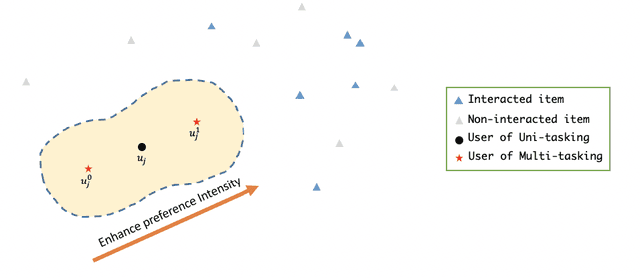

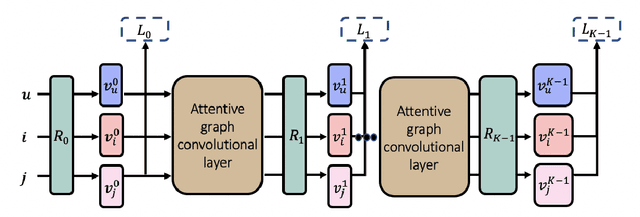
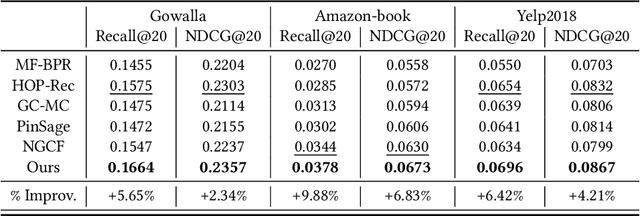
Abstract:In the one-class recommendation problem, it's required to make recommendations basing on users' implicit feedback, which is inferred from their action and inaction. Existing works obtain representations of users and items by encoding positive and negative interactions observed from training data. However, these efforts assume that all positive signals from implicit feedback reflect a fixed preference intensity, which is not realistic. Consequently, representations learned with these methods usually fail to capture informative entity features that reflect various preference intensities. In this paper, we propose a multi-tasking framework taking various preference intensities of each signal from implicit feedback into consideration. Representations of entities are required to satisfy the objective of each subtask simultaneously, making them more robust and generalizable. Furthermore, we incorporate attentive graph convolutional layers to explore high-order relationships in the user-item bipartite graph and dynamically capture the latent tendencies of users toward the items they interact with. Experimental results show that our method performs better than state-of-the-art methods by a large margin on three large-scale real-world benchmark datasets.
* RecSys 2020 (ACM Conference on Recommender Systems 2020)
Learning Unsupervised Semantic Document Representation for Fine-grained Aspect-based Sentiment Analysis
Jan 11, 2024



Abstract:Document representation is the core of many NLP tasks on machine understanding. A general representation learned in an unsupervised manner reserves generality and can be used for various applications. In practice, sentiment analysis (SA) has been a challenging task that is regarded to be deeply semantic-related and is often used to assess general representations. Existing methods on unsupervised document representation learning can be separated into two families: sequential ones, which explicitly take the ordering of words into consideration, and non-sequential ones, which do not explicitly do so. However, both of them suffer from their own weaknesses. In this paper, we propose a model that overcomes difficulties encountered by both families of methods. Experiments show that our model outperforms state-of-the-art methods on popular SA datasets and a fine-grained aspect-based SA by a large margin.
* International ACM SIGIR Conference 2019
Revisiting Neighborhood-based Link Prediction for Collaborative Filtering
Mar 29, 2022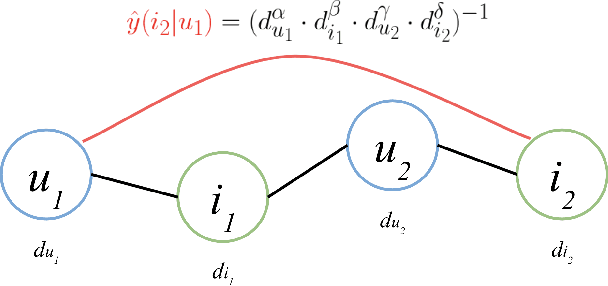


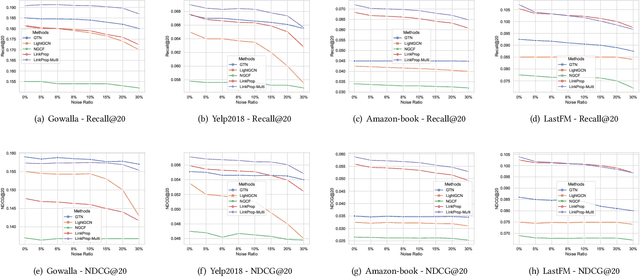
Abstract:Collaborative filtering (CF) is one of the most successful and fundamental techniques in recommendation systems. In recent years, Graph Neural Network (GNN)-based CF models, such as NGCF [31], LightGCN [10] and GTN [9] have achieved tremendous success and significantly advanced the state-of-the-art. While there is a rich literature of such works using advanced models for learning user and item representations separately, item recommendation is essentially a link prediction problem between users and items. Furthermore, while there have been early works employing link prediction for collaborative filtering [5, 6], this trend has largely given way to works focused on aggregating information from user and item nodes, rather than modeling links directly. In this paper, we propose a new linkage (connectivity) score for bipartite graphs, generalizing multiple standard link prediction methods. We combine this new score with an iterative degree update process in the user-item interaction bipartite graph to exploit local graph structures without any node modeling. The result is a simple, non-deep learning model with only six learnable parameters. Despite its simplicity, we demonstrate our approach significantly outperforms existing state-of-the-art GNN-based CF approaches on four widely used benchmarks. In particular, on Amazon-Book, we demonstrate an over 60% improvement for both Recall and NDCG. We hope our work would invite the community to revisit the link prediction aspect of collaborative filtering, where significant performance gains could be achieved through aligning link prediction with item recommendations.
 Add to Chrome
Add to Chrome Add to Firefox
Add to Firefox Add to Edge
Add to Edge